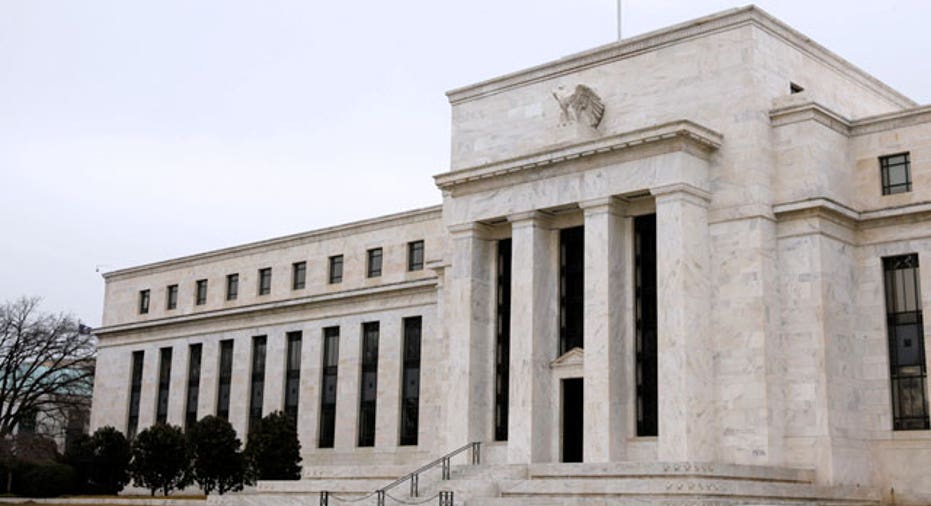Fed Likely to Keep Rates Steady, Markets Eye Change in Tone

It’s been a tumultuous year for Wall Street, and market participants aren’t expecting the Federal Reserve to add fuel to the now-contained fire at the conclusion of the central bank’s July meeting Wednesday.
U.S. central bankers will wrap up their policy-setting Federal Open Market Committee meeting at 2:00 p.m. ET, and expectations are for interest rates to remain near historic lows. Fed funds futures, a tool used to predict market expectations for changes in monetary policy, show just a 4% chance of a rate rise at the conclusion of the Fed’s two-day meeting.
With the statement is expected to be cut and dry, and no press conference by Fed Chief Janet Yellen later in the afternoon, reaction on Wall Street could be muted. However, market watchers say it’s the minutes, released next month that will likely show a lively conversation among FOMC members, and give more color about their biggest concerns, which could run the gamut from Brexit-related fallout in the U.S. economy to continued worry about slow global growth and how negative interest rates in many nations impacts U.S. monetary policy.
“Many times this year, we’ve been caught between the statement and the minutes. The minutes not being entirely in accord with the statement,” Paul Mortimer-Lee, global head of market economics at BNP Paribas explained. “The statement records the decision, [which] doesn’t change very much from one meeting to another. The language is slow to evolve. The minutes reflect the discussion of the committee.”
He said, though, while Brexit certainly caught global markets off guard late last month, it has had minimal effect so far on the U.S. economy. Mortimer-Lee expects limited debate about Brexit among FOMC participants this month.
“The economy looks better, the labor market looks better, and a couple people have said growth looks to be about 2%,” he said. “There’s this desire to normalize, provided Brexit risks don’t increase, provided payrolls…remain around 175,000 maybe around 200,000, I think there’s a good chance they hike. Markets just haven’t been pricing in a sufficient chance.”
Indeed, looking further out at fed funds futures, odds for a rate rise at the Fed’s next meeting in September stand at just 22%, while November rate-hike expectations move up to 23% and December stands at about 45%.
Dan North, chief economist at Euler Hermes North America, expects to see discussion around the health and strength of the American consumer at this month’s meeting. Alongside a rebound in the June jobs report after an unexpectedly weak number in May, and a steadily-improving housing market, data have shown an increase in confidence and willingness for consumers to spend in the middle part of 2016 as they elected to spend dollars saved at the gas pump rather than stuffing it into savings accounts.
Retail sales last month jumped 0.6% from May, a bigger increase than economists had expected, while the Conference Board’s gauge of consumer confidence rose to 97.3 in July, according to the latest reading on Tuesday. Wall Street had expected confidence to slip this month, likely due to concerns about potential economic instability in the wake of Brexit.
North anticipated more hawkish language – centered around consumer spending – in the Fed’s July statement, which would help set the stage for a rate hike sooner rather than later.
“If they’re starting to say things like retail sales, consumer spending are strong, the labor market is firming, then that would lean more toward a September rate hike. If they start thinking about continued global uncertainty, Brexit fallout, a drag from net exports, then maybe September is less likely,” he speculated.
With solid economic data on nearly every front, Mortimer-Lee said the Fed is in a “temporary sweet spot,” and it should seize the opportunity to raise rates.
“The Fed wants to normalize and it’s really up to the data to stop them. And we don’t think the data’s going to stop them,” he said.
He expects to see only a slight tweak in the statement Wednesday.
“Instead of saying the economy appears to be bouncing back, they’ll say the economy has bounced back. The labor market assessment will clearly be a bit more positive than it was last month. Inflation probably won’t change very much. So, they’ll move in a slightly more hawkish direction,” Mortimer-Lee expected.



















